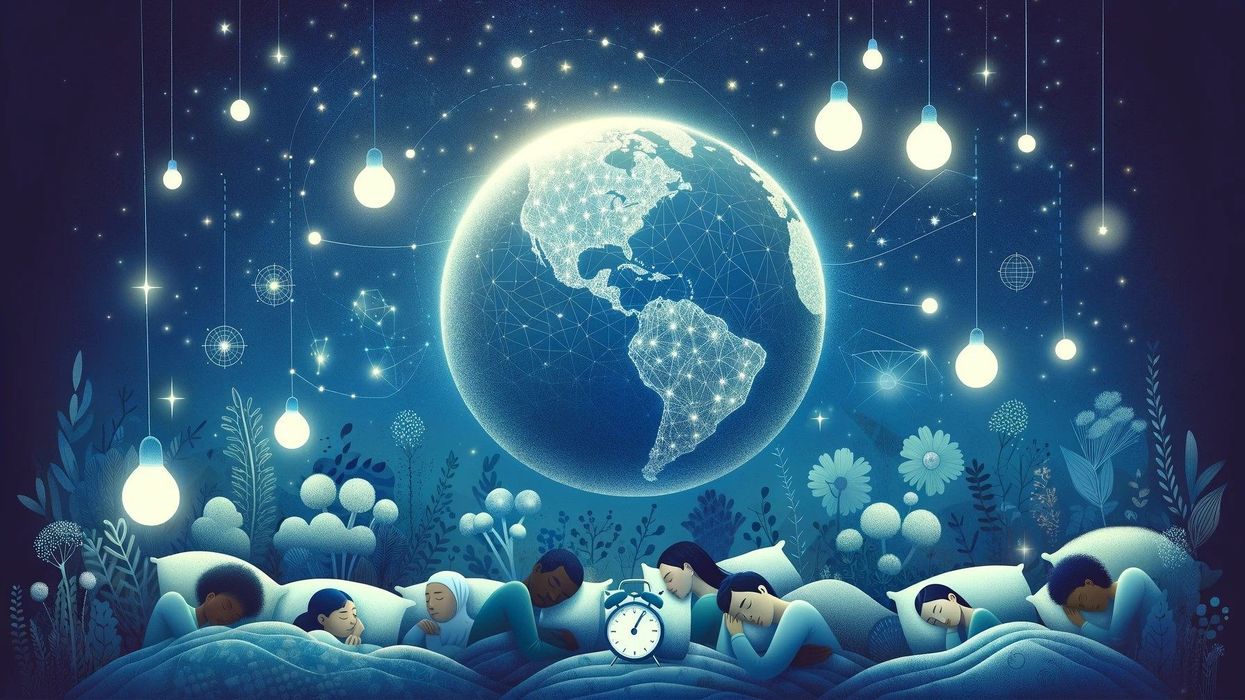The start of the holiday season in November is when the sun starts to set earlier in the evening and rises later during the mornings.
This change of weather can make people miss sunshine while others might start feeling sad. Though the start of November is the start of a joyous and merry mood, this weather change can cause some people seasonal depression.
The ones who love to live in the sunny weather will however be happy to know that the winter solstice of the darkest day of the year is actually a sign that the sun, our star, is coming back and as the days pass, they will start getting longer again. But when do the days start getting longer?
After the 21st of December, the days start to get longer by two minutes and seven seconds approximately every day.
For the ones that are living in the northern hemisphere, this occurs around the 21st/22nd, depending on your timezone. Along with the days getting longer again, they are also lighter.
There is more sunshine throughout the day, making it a more warm and sunny place for people to go about their days.
So if you are feeling these winter blues, know that you are away from the sun only temporarily and will see more daylight again! Let’s learn more about the longest day of the year, the shortest day, and much more!
After reading all about this phenomenon, later you would want to know when do the days start getting shorter and when do the planets align.
Is the longest day of the year the same date all over the world?
21 June is known to be the longest day for people all over the world. Though the number of hours remains the same, 21 June is considered to be a long day because of how much daylight it has.
On this day, the sun will rise around 5:24 am and set at 7:23 pm. This makes at least 14 hours of sunlight present throughout the day.
Solstice is known to be observed around 3:13 am on June 21st. In 2020, the solstice was even more special for all astronomy enthusiasts as it coincided with a rare annular solar eclipse.
It is estimated that it was only the second time that these two astronomical events had occurred together since 1982. Furthermore, the summer solstice from this day would mark some of the longest periods of sunlight in parts of the northern hemisphere.
The summer solstice, every year, occurs between 20 June and 22 June where this season is known to be marked with longer days, more daylight, and short nights.
The Latin word of solstice means 'sun stands still'. It is given this term as the projection of the sun appears in such a way where it is not moving.
This is said to happen once the sun reaches the highest point in the northern or southern part of the equator.
The Earth’s tilted axis of 23.5 degrees is what the change of any season, solstices, or equinoxes are dependent upon concerning the sun. The axis of the Earth is an imaginary line that runs through the center of the planet.
Which season has the longest days?
When summer occurs in North America, is it winter in continents like Australia or South America? Our planet is divided into two halves by something called the equator where it is divided into the Southern Hemisphere and Northern Hemisphere.
So when summer occurs in the Northern Hemisphere, the Southern Hemisphere has winter. The days in winter are shorter than in summer.
The Earth’s top part is the North Pole and the bottom part is the South Pole. Due to the tilt of the earth at approximately 23.5 degrees, the summer days are longer and winter days shorter.
When the hemisphere is tilted the closest to the sun, is when the days are the longest and brightest as the sun rays give out more direct light. However, one sun ray doesn’t stay tilted closer to the sun all year.
This is because the earth does not stay still in one place.
It is known to orbit around the sun in oval shapes.
It orbits around the sun annually as it takes up one whole year to finish an orbit around the sun. Due to the tilted nature of the earth, one side of the hemisphere will be the closest to it for part of a year.
Furthermore, as the earth keeps orbiting around the sun, the other part of the hemisphere is then closer to it. In the Northern Hemisphere, when the summer solstice occurs, the longest day of the year is on the 21st of June as the North Pole is tilted closest to the sun.
Around December of 21, the exact opposite happens as the South Pole is closest to the sun, having its own summer solstice and its longest day whereas the North Pole has the shortest.
Do days start getting longer after the winter solstice?

The winter solstice occurs on an annual basis around 21 December or 22 December. This is for the Northern Hemisphere.
In the Southern Hemisphere, the winter solstice occurs on June 20th or the 21st. Winter solstice is a sign for the occurrence of the shortest day of the year and with the fewest hours of light.
However, after the winter solstice is reached, the days start to become longer again. This goes on till we reach the summer solstice which consists of the longest day of the year and summer.
The official beginning of the astronomical winter is what the start of winter solstice marks for. It isn’t the same as meteorological winter.
The start of this happens three weeks before the winter solstice. This solstice occurs once a year in both the Southern Hemisphere and the Northern Hemisphere.
It helps to mark the start of the winter season in both hemispheres. These hemispheres experience diametrically opposite solstices. When one of them is facing the highest point of the sun is the summer solstice while the other hemisphere is simultaneously facing the winter solstice.
Like we have already learned, this occurs because of the earth’s tilted axis. Here, when one side is faced closest towards the sun, the other is furthest from it and vice versa.
How long does the summer solstice last?
During the occurrence of the summer solstice, the earth is positioned in its orbit, making the North Pole lean the most towards the sun. The sun is said to be directly overhead at noon that is 23.5 degrees north of the equator, as seen from earth.
This occurs at an imaginary line that encircles the globe known as the Tropic of Cancer.
The locations in the north of the Earth’s orbit equator all have days that are longer than 12 hours in the summer solstice. However, all the locations that are in the south at this time, have fewer than 12 hours in a day.
A solstice is said to occur for all of us at the same time, it only differs in summer and winter solstice and the different time zones of it.
How many minutes of daylight do we gain each day?
According to astronomers, the season of summer officially starts when the summer solstice occurs. Meteorologists divide a year based on its four seasons. This is further grounded by weather patterns. So it is estimated that after the first of summer in the calendar is when the summer solstice happens.
The summer solstice happens around June 20th to June 22nd every year. This is when the sun has reached the highest point in the Northern Hemisphere, which makes it the longest day of the year with sunlight being there for 17 hours throughout the day.
For the ones residing in the Southern Hemisphere, the weather is opposite there.
For the Southern Hemisphere, the summer solstice occurs in December 20th- 22nd, where the longest day and amount of sunlight occurs here. While at this time, the Northern Hemisphere has its winter solstice, the shortest days of the year with the least amount of sunlight.
When is the darkest time of the year?
The darkest time of the year differs in the calendar of the Northern and Southern Hemispheres. In the Northern Hemisphere, the winter solstice occurs in December, which is considered the darkest time of the year.
At the same time, in the Southern Hemisphere, the summer solstice occurs, which has the longest day with the most amount of sunlight of the year.
The fewest hours of daylight are present in the Northern Hemisphere in the month of December. This happens around 20 December to 23 December.
In the North Pole of the Arctic circle, there is little or no direct sunlight around this time of the year. In worldwide cultures, the winter solstice plays quite an important role. During Christmas celebrations from ancient times until this day, the observation of the winter solstice is closely linked to Christmas.
Here at Kidadl, we have carefully created lots of interesting family-friendly facts for everyone to enjoy! If you liked our suggestions for when do days start getting longer, then why not take a look at why do we celebrate teachers day, or why do we celebrate republic day?









